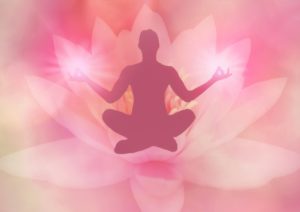Mindfulness is not a strong suit in western culture. A fast-paced, hectic lifestyle joined at the hip to myriad responsibilities creates an environment where the pursuit of mindfulness is at best a pipe dream for most people. Our minds are scattered between work, family, finances, and a plethora of other pressures contending for our attention. It is little wonder that most of us feel stressed, overwhelmed, and on the cusp of burnout most of the time.
The irony here is that mindfulness may very well constitute the solution to this ulcer-inducing way of life that most of us call “normal.” The fact is, once we really learn to be mindful and fully attentive to what we are doing, we become more efficient and able to accomplish more while expending less energy. Further, my personal experience has taught me that when I am truly conscious of my actions, my feelings, and my thoughts I am less likely to feel overwhelmed and stressed. I find that I can remain at least marginally centered in spite of conflicting pressures and voices jockeying for my attention.
Mindfulness is at its core a spiritual issue.
Although all faith systems stress mindfulness to some extent, nowhere is it a more central theme than in Buddhism. Mindful living is one of the central components of the Noble Eightfold Path described by Gautama Buddha as the path out of human discontent. I have found that when I make a consecrated commitment to work on mastering my monkey mind through consistent meditation practice and make efforts to become more mindful, life becomes generally better.
 Nothing really changes externally the same pressures, responsibilities, deadlines, and stress they are all still there. But something gradually begins to change internally as a personal anchor of centeredness begins to take shape. Although I am not perfect at it and certainly I am a long way from the calm demeanor of a Mahatma Gandhi, I am less likely to appear as a trance channel for Yosemite Sam.
Nothing really changes externally the same pressures, responsibilities, deadlines, and stress they are all still there. But something gradually begins to change internally as a personal anchor of centeredness begins to take shape. Although I am not perfect at it and certainly I am a long way from the calm demeanor of a Mahatma Gandhi, I am less likely to appear as a trance channel for Yosemite Sam.
Personally, I find it hard to wrap words around the full array of positive qualities that emerge from the practice of meditation and becoming more mindful. Perhaps that is one of the reasons I appreciate the work of Jon Kabat-Zinn, a pioneer in the use of mindfulness and meditation practice in health applications. Kabat-Zinn, in his book Coming to Our Senses, gives one of the best descriptions I have encountered:
Meditation as an act of love
“More than anything else, I have come to see meditation as an act of love, an inward gesture of benevolence and kindness toward ourselves and toward others, a gesture of the heart that recognizes our perfection even in our obvious imperfection, with all our shortcomings, our wounds, our attachments, our vexations, and our persistent habits of unawareness. It is a very brave gesture: to take one’s seat for a time and drop in on the present moment without adornment. In stopping, looking, and listening, in giving ourselves over to all our senses, including mind, in any moment, we are in that moment embodying what we hold most sacred in life.
 In making the gesture, which might include assuming a specific posture for formal meditation, but could also involve simply becoming more mindful or more forgiving of ourselves, immediately reminds us and re-bodies us. In a sense, you could say it refreshes us, makes this moment fresh, timeless, free up, wide open. In such moments, we transcend who we think we are. We go beyond our stories and all our incessant thinking, however deep and important it sometimes is, and reside in seeing what is here to be seen and the direct, non-conceptual knowing of what is here to be known, which we don’t have to seek because it is already and always here…In words, it may sound like an idealization. Experienced, it is merely what it is, life expressing itself, sentience quivering within infinity, with things just as they are.”
In making the gesture, which might include assuming a specific posture for formal meditation, but could also involve simply becoming more mindful or more forgiving of ourselves, immediately reminds us and re-bodies us. In a sense, you could say it refreshes us, makes this moment fresh, timeless, free up, wide open. In such moments, we transcend who we think we are. We go beyond our stories and all our incessant thinking, however deep and important it sometimes is, and reside in seeing what is here to be seen and the direct, non-conceptual knowing of what is here to be known, which we don’t have to seek because it is already and always here…In words, it may sound like an idealization. Experienced, it is merely what it is, life expressing itself, sentience quivering within infinity, with things just as they are.”
From Kabat-Zinn’s description, it is obvious that coming to live in the present moment, to be mindfully attentive to what is happening in front of our eyes, is a spiritual experience of high significance. On rare occasions, we may be granted by grace a glimpse of this unadorned reality of “just what is” beyond our ideas about what is. These moments are personal epiphanies, always remembered and transformational in nature.
As special as these moments are, they rarely come frequently unless a person prepares the soil for their coming. That is where meditation comes in. Teachers from all faith traditions stress the importance of spending time in meditation and/or contemplation. For some reason not completely apparent, the more time we spend in the proximity of the “Sacred Silence,” the more likely we are to experience these divine moments of pristine clarity. Meditation, whatever form it may take, appears to prepare the soil of our being for the coming of these special times when we actually see what is before us. Meditation and mindfulness are the twin practices that increase our capacity to be receptive to these divine gifts of the Spirit.
The power of meditation
In my own experience, those forms of meditation that lend themselves to the quieting of the mind have proved the most beneficial when it comes to opening up to the kind of special encounters described above. My preference has been the utilization of techniques involving focusing my attention on my breathing as an anchor to which my often skittering mind is tethered and brought under at least a modicum of control. For others, mediations involving visualization, chanting, or mantra may be more conducive to the experience we are discussing. Whatever the technique, the important component is the regularity of practice. The more we meditate, the more mindful we will become. This is a simple equation, but it has been consistently verified.
I am of the firm conviction that the more mindful people become, the more they will be able to master themselves and by doing so, behave in ways that are less problematic and more harmonious. Meditation is the pathway to mindfulness and mindfulness is true, a great blessing to one and all.





